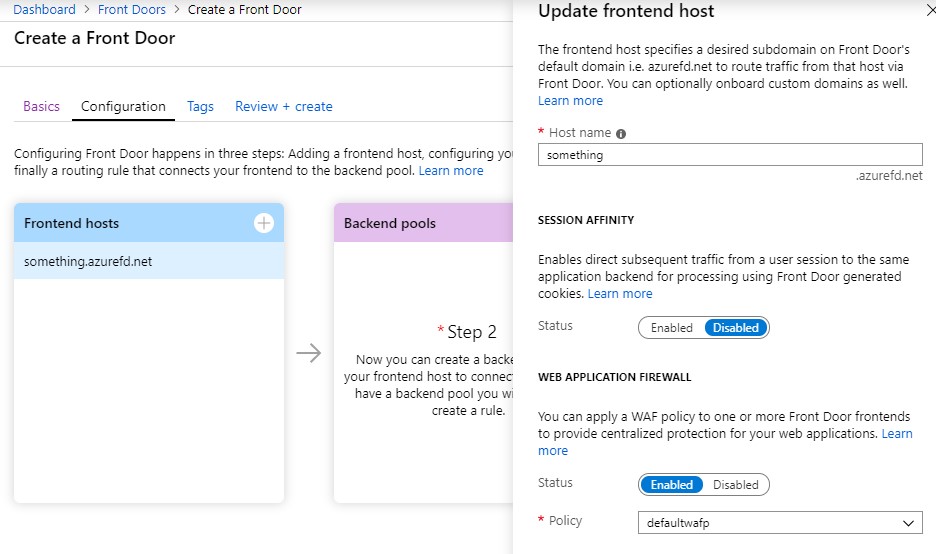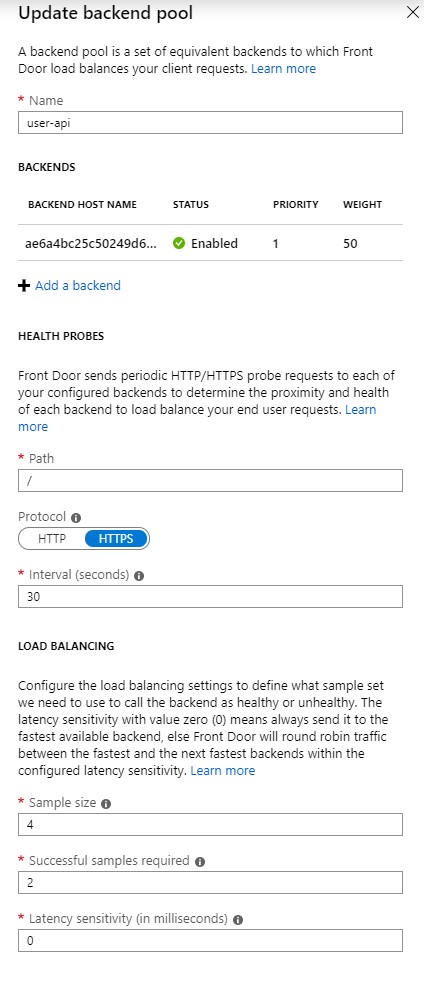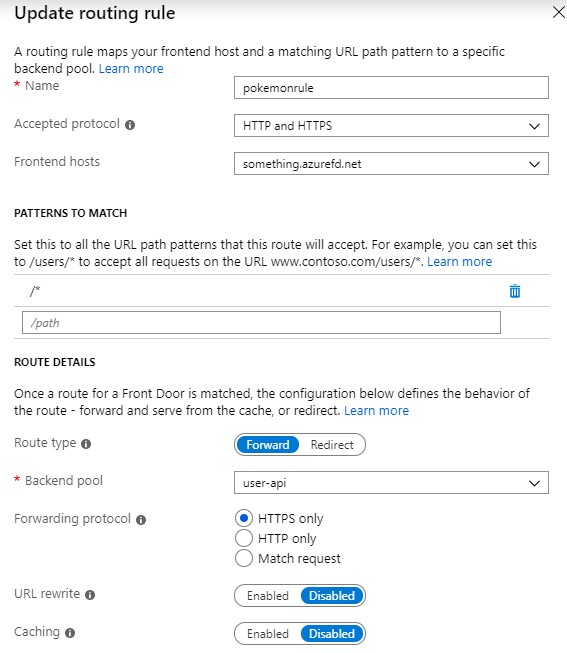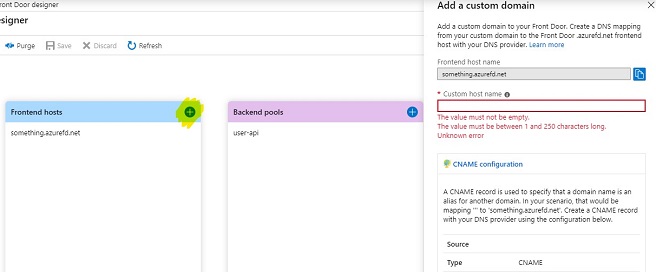Creating a large application and exposing it to the web has a lot of challenges. You will have to think about performance, security, reliability. You are probably not Netflix but you might have an application that is:
- composed out of different (micro)services
- highly available and fast from anywhere on the globe
- needs specific routing rules for something (a-b testing?)
Azure Front Door Service
There are a lot of different solutions that might solve your routing puzzle, but in this blog we will dive into the capabilities of “Azure Front Door Service” (from here FDS because I’m lazy).
FDS is a global service takes care of routing and monitoring your HTTP traffic. FDS is a nice name because it is a service that provides an entry point for your web application. It actually provides you multiple entry points, they are located all over the world and from the nearest ‘point of presence’ the route to your app will be determined by FDS.

The best way of exploring new stuff for me is diving straight in. For most Azure services it is really easy and low-cost to try something out and deleting it afterwards. For this blog I did just that and created an FDS and while making some screenshots along the way.
Setting up FDS
If you create your FDS you will have to select a resource group and a region to create it, like any other resource. But the actual service that is hosting the endpoints is running on different pops around the world. The setup of the service consists out of three parts that you will have to configure.
Frontend hosts
Here you can define your entry points. A frontend host has a host name (something.azurefd.net). You can if you want session affinity here and if you want to add a WAF (Web application firewall) by adding a WAF policy that you have defined.

Backend pools
You will have to create one or more Backend pools. In these pools you will add ‘Backends’, these backends are your web applications that you want to expose. I know what you are thinking and yes, from your applications perspective these are frontends. A configuration of a backend pool contains a definition for health probes. To be able to keep the promise of all the cool routing and failover features the pool needs to know if a ‘Backend’ is up and running. Per backend you can also define ‘weight’ if you want to give some backends more traffic then others. This might be useful if you are doing A-B testing or if you have canary releases.

Routing rules
To tie it all together you need at least one routing rule. If the service gets a request on a frontend host it has to match it to a pattern, the simplest catch all (/*) is a mandatory rule to have. In these rules you simply bind an incoming url path to one of your backend pools. You can basically to two things, forward or redirect. With these rules you can also define what incoming protocols to accept (http or https) and with what protocol to route to the backend.

Features
You can add a Custom Domain to the service as you would expect. After you have created the front door you need to click the ‘plus sign’ again in frontend hosts.

A feature that in my opinion should be present in all the Azure services that have a custom domain option is certificate management. Next to uploading your own you can have one created and rotated by FDS.
FDS supports end-to-end IPv6 connectivity and by supporting HTTP/2 it can reduce a lot of traffic overhead hitting your backends.
With the caching option that you can setup per routing rule you control what is cached and you will be able to serve some of your content to the user directly from the pop without hitting any backend.
Possible Scenarios
There are multiple scenarios that might benefit from a service like FDS. Most of them match an app that has a serious scale and/or budget.
- Improving performance by serving from cache at the endpoints
- Improving performance by reducing direct hits on your hosts
- Exposing multiple apis and frontends on different paths of a single domain
- Routing traffic to the nearest hosts
- Failover (to different other region)
- A-B testing or canary releases
- All of the above!
Is this for you?
This is a service that you can use for big and complex applications with a global presence, considering this the price isn’t too bad. But this might be a bit overkill for your side project. Please check out the pricing page to prevent big surprises.
If you think you need this service be sure to check out the official docs for all the details.